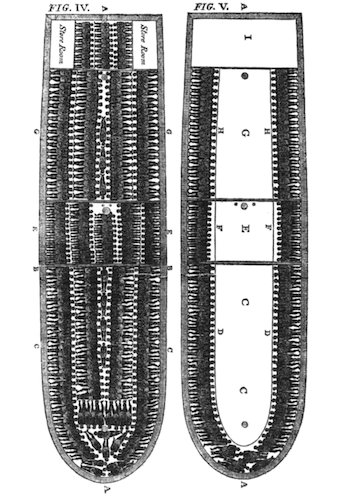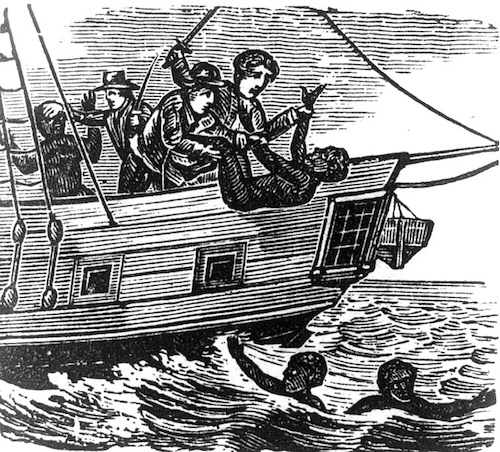The Middle Passage was the ocean journey that brought enslaved Africans from the coast of Africa to the Americas. It was called the "Middle" Passage because it was the second leg of the triangular trade, the trade route that began in Europe, continued to Africa, crossed the Atlantic, and returned to Europe. Enslaved people came from many different regions and cultures. Most had never been on a ship or seen the ocean. Once they were captured, they were taken to coastal forts, sometimes held for months, and then loaded onto ships bound for the Americas.
The conditions on board were terrifying and inhumane. Enslaved Africans were chained together and packed tightly into the lower decks of the ship. There was almost no space to move, and many had to lie in their own waste. Disease spread quickly through the ship, and sicknesses like dysentery and fever killed many. The stench from the ship was so strong that it could be smelled before it was even seen. Some enslaved people were brought above deck for a short time each day, but most remained below, weak and suffering. Women and children were sometimes allowed to move more freely, but were also often abused by members of the crew.

The journey across the Atlantic could last anywhere from six weeks to three months, depending on the weather and the ship's route. Ships often stopped at several ports to buy or sell people, which made the trip even longer. Starvation, illness, and violence were common. Some enslaved Africans died from sickness or refused to eat. Others jumped overboard to end their lives. Even though the enslaved outnumbered the crew, most attempts to fight back were crushed with brutal force. Some ship captains even killed those who resisted and threw their bodies into the ocean.
Historians estimate that more than 12 million Africans were forced into the Middle Passage. At least one million died during the voyage. Many more died before reaching the coast or shortly after arriving in the Americas. Survivors stepped onto land sick, traumatized, and separated from their homes and families. The Middle Passage was only one part of the long, violent journey into slavery. For those who survived it, the suffering continued on plantations, in mines, and in homes throughout the colonies. The Middle Passage remains one of the most tragic examples of human cruelty in history.


